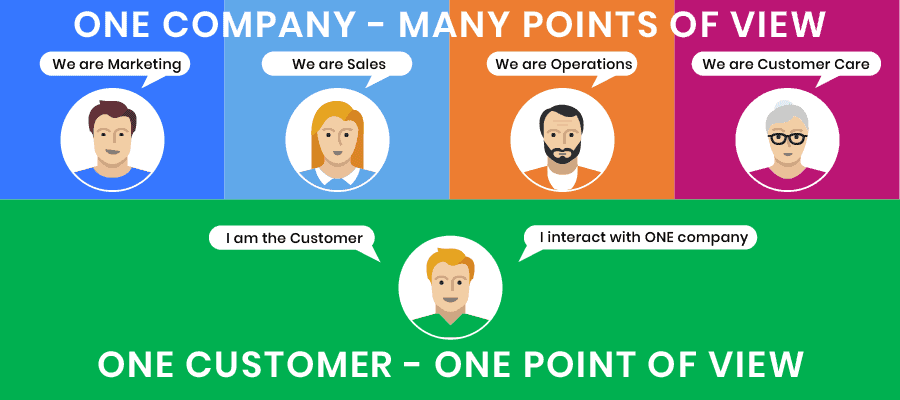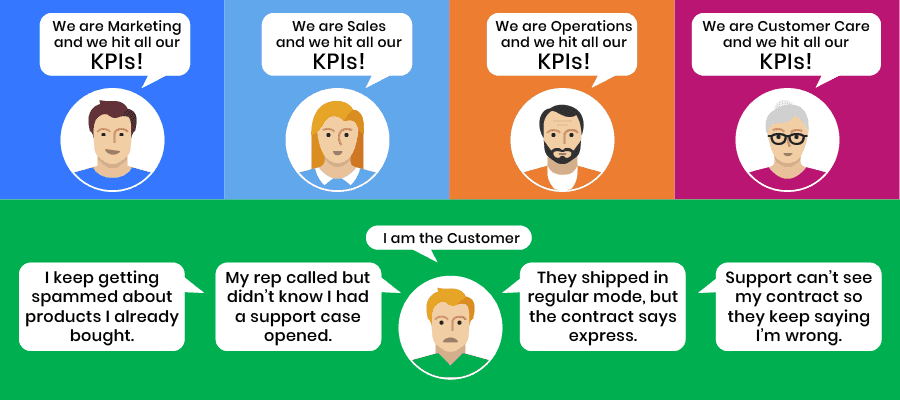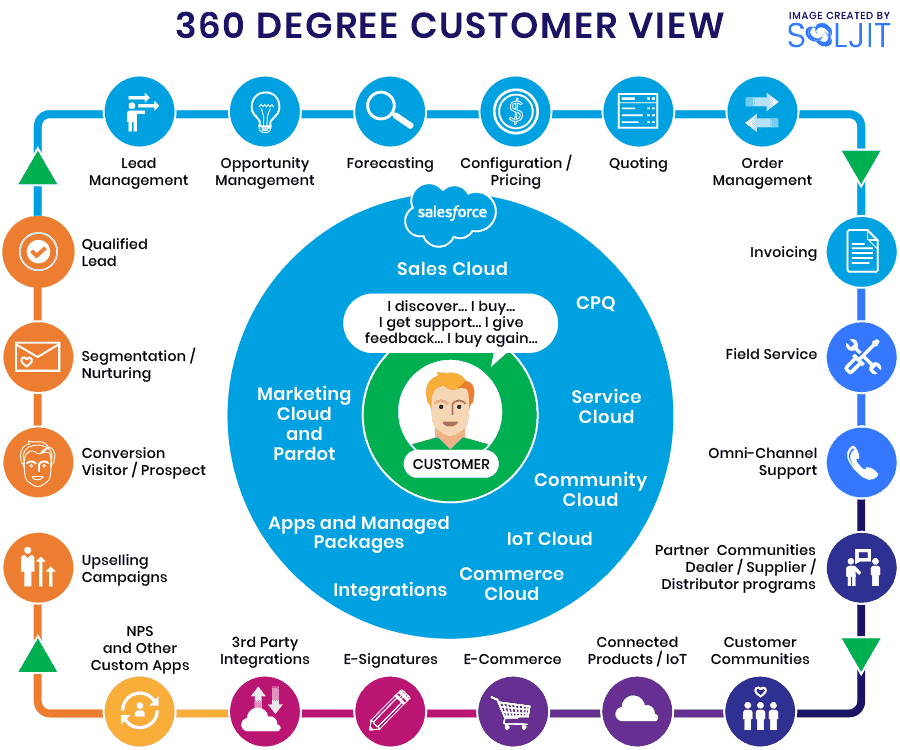

A 360-degree customer view is when you are able to consult and update all the information related to customers — including all their interactions with your company — in one place. This enables a better coordination of the customer experience, and generates efficiency gains between departments.

Why does it matter?
From the customer’s point of view, the experience with your company is seen as ONE thing. But within your company, every department or division is split into MANY things.

To deliver the best experience possible, or at least an experience that will positively differentiate your company from its competitors, the client’s experience with your different departments and divisions has to be coherent, consistent, practical, useful, and helpful.
If your company can’t look at that experience as a whole, a department could still hit its respective KPIs while delivering an overall bad experience.

What is the opposite of a 360-degree customer view?
The opposite is what the vast majority of companies are still dealing with; a plethora of different systems that don’t talk to each other:
The consequences of this are:
What does a 360-degree customer view look like?
That would be a single system from which you can see and update all the information related to customers and their interactions with the company. The system enables each department to have access to useful information and the history of customer interactions with other departments in order to know the best way to manage their next task or customer interaction.
Here is an example of a company using Salesforce. The menu below is the one made available to their Sales team (Accounts, Opportunities, Forecasts, etc.), but it incorporates information coming from other departments that is useful for Sales: information from Marketing (Leads, Campaigns) and information from the Customer Care department (Cases). Instead of reaching out to customers blind, or with little information, the Sales team knows all there is to know; they have a 360-degree view of the customer.

From the customer’s point of view this means:
“The customer care department knows what orders I’ve placed in the past, what I’ve been billed or if sales is currently working with me on a new opportunity. They can therefore handle my case faster by using all of this information.“
“The sales department knows whether I’m currently working with their support team on a technical issue so that if they call me, I won’t have to re-explain it to them for the umpteenth time.“
“The marketing team knows what I’ve purchased so they won’t spam me about products I’ve already bought. They can instead send me a promotion about a complementary product or service.“
One bad experience you’ve had in the past
You’ve been through this before and you hated it.
It might have been earlier this year or last year… You called the customer service of a company because you had an issue with one of their products or services. You told them what the issue was and they told you they’d take care of it.
A few days later, after receiving neither news nor update about the case, you called them again. And for some reason, even though you’re dealing with the same customer service department, you had to repeat your story. You said something along the lines of:
“But I called a few days ago. The information should be in your system. I shouldn’t have to tell you this again.”
How Salesforce can help your company do better
The 360-degree customer view is where Salesforce has been a step ahead of the market for years and continues to do so. With its different Cloud modules, it’s one of the few platforms, if not the only one, that gets as close as possible to achieving a 360-degree view.
If we follow the path of a customer, from discovery to purchase to delivery, you can see that the Salesforce platform can manage and integrate together each part of the journey.

Here is a brief list of Salesforce Cloud modules shown in the image above, along with others that we lacked room for. Please note that each module is customizable and programmable according to the needs of your business, regardless of industry.
Additionally, Salesforce can be integrated with the following systems to close the loop with your operations or accounting departments:
Finally, Salesforce’s very own “App Store”, called the AppExchange, contains over 3,500 apps from third parties that can also be integrated with Salesforce.
This is the toolbox that Salesforce has to enable you to create your 360-degree customer view and improve the customer experience provided by your company.
Think about it. If your company is not using a platform enabling the improvement of internal operations and the customer experience via the 360-degree customer view, it’s possible that you find yourself lagging behind your competitors.
Accelerate your continuous improvement